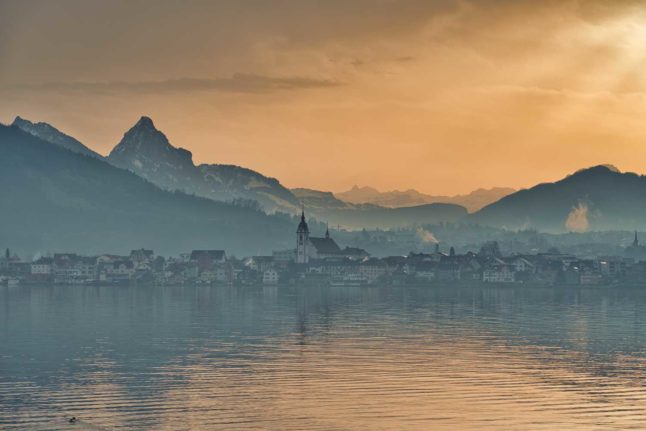The reason for the cloud: a depression over Morocco and Algeria, which disturbs and raises the fine sand of the Sahara desert, which then heads towards Switzerland.
The reason: a depression over Morocco and Algeria, which raises the fine sand of the Sahara desert, which heads towards Switzerland.
But other than creating Instagram-ready sepia-tinged sunset photos, readers have gotten into touch to ask if they have anything to worry about.
READ MORE: Sahara dust covers Switzerland
Should I be worried about breathing Sahara dust?
Generally speaking, only those with allergies and asthma should be worried about the dust.
The fine particles can enter people’s airways and cause irritation, but this is not dangerous.
“Those with asthma could also have increased symptoms due to the Sahara dust. Due to the disease, your respiratory tract is more sensitive to various stimuli – just like fine dust. That’s why good control of asthma symptoms is important,” Roxane Guillod, an expert at the Swiss Allergy Centre, told 20 Minutes.
Die Schweiz sieht gelbrot: Staubige Grüsse aus der #Sahara! Mit einer südwestlichen Strömung ist #Saharastaub aus Algerien über unser Land geweht worden. Aus Benglen das Bild von Peter Meyer. Lesen Sie mehr in unserem @MeteoBlog unter https://t.co/hA8uREUaTF pic.twitter.com/bSYDjwyjgs
— MeteoSchweiz (@meteoschweiz) March 15, 2022
The impact is comparable to pollens in spring, meaning that using your asthma medication or other allergy blockers like anti-histamines are the best treatment options.
While a Covid mask might seem like the best approach, some of the dust can be too fine – even for FFP2 masks.
There are no dangers with being outdoors or even exercising, although you may want to take some tissues.
A spokesperson for Zurich’s University Animal Hospital told Swiss news outlet 20 Minutes that the dust was harmless to pets.
What about cleaning?
The dust has been particularly noticeable on dark surfaces such as leather jackets and cars, although you should act quickly if you want to remove it properly.
Swiss tabloid Blick says a simple rinse with soap and plenty of water can remove it from cars. The more water the better, as a dryer clean can lead to small scratches which can make the paintwork dull.
Ideally you should take your car to a car wash, although that can be expensive.
Stains on leather and other clothes can also be wiped off with a sponge, although less water is probably smart. Those concerned about particularly valuable items of clothing can take it to a specialist cleaner.
Jungfraubahnen AG – Eiger gletsjer noordwand 14-03 versus 15-03 #Sahara #dust pic.twitter.com/SwtuzWy1AL
— Johanns (Alpen)weer (@Alpenweerman) March 15, 2022
What are The Local’s Reader Questions?
As part of our service to our readers and members, we often answer questions on life in Switzerland via email when people get in touch with us.
When these have value to the greater Local Switzerland community, we put them together as an article, with ‘reader question’ in the headline.
All readers of The Local Switzerland can ask a reader question, i.e. you do not need to be a member. If you do find our reporting valuable however, then please consider signing up.
READ MORE: What are The Local Switzerland’s reader questions?



 Please whitelist us to continue reading.
Please whitelist us to continue reading.
Member comments